MRI Anatomy And Imaging
Explore the intricacies of human anatomy through MRI imaging, focusing on identifying structures like the Achilles tendon and understanding MRI techniques.

Quiz Preview
- 2.
Which letter corresponds to the inferior vena cava?
-
A
-
B
-
C
-
D
Correct Answer
A. CExplanation
The letter "c" corresponds to the inferior vena cava. The inferior vena cava is a large vein that carries deoxygenated blood from the lower body back to the heart. It is located on the right side of the body, running parallel to the spine.Rate this question:
-
- 3.
Which letter corresponds to the right adrenal gland
-
A
-
B
-
C
-
D
Correct Answer
A. AExplanation
The letter "a" corresponds to the right adrenal gland. The right adrenal gland is one of the two adrenal glands located on top of the kidneys. It is responsible for producing hormones such as cortisol, aldosterone, and adrenaline, which play important roles in regulating metabolism, blood pressure, and stress response.Rate this question:
-
- 4.
This image was aquired with localizers placed
-
Using the axial to place the localizers perpendicular to the supraspinatus tendon
-
Using the axial to place the localizers parallel to the supraspinatus tendon
Correct Answer
A. Using the axial to place the localizers parallel to the supraspinatus tendonExplanation
The correct answer is using the axial to place the localizers parallel to the supraspinatus tendon. This means that the localizers were positioned in a way that they align with the supraspinatus tendon, which is a structure in the shoulder. This positioning allows for accurate imaging and assessment of the supraspinatus tendon and surrounding structures.Rate this question:
-
- 5.
The letter a corresponds to
-
Styloid of the clavicle
-
Supraspinatus tendon
-
Deltoid insertion
-
Superior labrium
Correct Answer
A. Superior labriumExplanation
The letter "a" corresponds to the superior labrum. The superior labrum is a ring of cartilage that surrounds the glenoid cavity of the scapula. It helps to deepen the socket and provides stability to the shoulder joint. It also serves as an attachment point for several ligaments and tendons, including the biceps tendon.Rate this question:
-
- 6.
The highlighted area represents
-
Deltoid muscle
-
Supraspinatus tendon
-
Infraspinatus
-
Posterior labrum
Correct Answer
A. InfraspinatusExplanation
The highlighted area represents the infraspinatus muscle. This muscle is located on the posterior aspect of the shoulder and is one of the rotator cuff muscles. It plays a key role in the external rotation of the shoulder joint and stabilization of the humeral head within the glenoid fossa. The supraspinatus muscle is located above the infraspinatus, the deltoid muscle is a larger muscle that covers the shoulder joint, and the posterior labrum is a cartilaginous structure that helps deepen the glenoid fossa.Rate this question:
-
- 7.
Pixels vs Resolution
-
(Pixel width) ( Slice) / Pixel Ht = Resolution
-
(Pixel ht) (Pixel Width) (Slice) = Resolution
-
(Pixel Ht) (Slice) / (Pixel Width)= Resolution
-
Slice / (pixel ht) (Pixel Width) = Resolution
Correct Answer
A. (Pixel ht) (Pixel Width) (Slice) = ResolutionExplanation
The formula (Pixel ht) (Pixel Width) (Slice) = Resolution is the correct answer because it correctly calculates the resolution by multiplying the pixel height, pixel width, and slice. This formula takes into account all three factors and provides the accurate resolution measurement.Rate this question:
-
- 8.
FOV vs. SNR
-
SNR = (Old FOV/ new FOV)sq
-
SNR = sq rt (old FOV/ new FOV)
-
SNR = sq rt of change in FOV= sq rt ( new/old FOV)
-
SNR = (new FOV/ old FOV) sq
Correct Answer
A. SNR = (new FOV/ old FOV) sqExplanation
The given equation SNR = (new FOV/ old FOV) sq represents the relationship between the Signal-to-Noise Ratio (SNR) and the change in Field of View (FOV). It states that the SNR is equal to the square of the ratio of the new FOV to the old FOV. This means that as the FOV increases, the SNR also increases, and vice versa. The square term indicates that the change in FOV has a quadratic effect on the SNR.Rate this question:
-
- 9.
The letter d represents the
-
Deltoid insertion
-
Supraspinatus tendon
-
Rotator cuff
-
Humeral head
Correct Answer
A. Supraspinatus tendonExplanation
The correct answer is the Supraspinatus tendon. The supraspinatus tendon is one of the four tendons that make up the rotator cuff in the shoulder. It runs from the supraspinatus muscle to the top of the humerus bone. This tendon plays a crucial role in shoulder stability and is commonly involved in rotator cuff injuries.Rate this question:
-
- 10.
SNR and bandwidth relationship
-
SNR = change in NEX or new NEX / old NEX
-
SNR = sq rt of change in bandwidth or new RBW / old RBW
-
SNR = 1/sq rt of change in BW or 1 / (new RBW / old RBW)
-
SNR = 1 / sq rt of change in BW or 1 / (old / RBW /new RBW)
Correct Answer
A. SNR = 1/sq rt of change in BW or 1 / (new RBW / old RBW)Explanation
The given answer, "SNR = 1/sq rt of change in BW or 1 / (new RBW / old RBW)", correctly represents the relationship between SNR and the change in bandwidth. It states that SNR is equal to either 1 divided by the square root of the change in bandwidth or 1 divided by the ratio of the new RBW (Resolution Bandwidth) to the old RBW. This equation shows how the SNR is inversely related to the change in bandwidth, meaning that as the bandwidth increases, the SNR decreases, and vice versa. It also demonstrates that the SNR is affected by the ratio of the RBW values, with a higher RBW ratio resulting in a lower SNR.Rate this question:
-
- 11.
Non MRI individuals should stay behind
Correct Answer
5 gaussExplanation
The answer states that non MRI individuals should stay behind 5 gauss. This implies that individuals who are not suitable for undergoing MRI (such as those with certain medical conditions or implanted devices) should not be exposed to a magnetic field strength greater than 5 gauss. This precaution is likely to ensure their safety and prevent any potential adverse effects that could arise from exposure to higher magnetic fields.Rate this question:
- 12.
Which of the following structures is NOT typically well-visualized on a standard T1-weighted MRI image?
-
White matter
-
Gray matter
-
Cerebrospinal fluid (CSF)
-
Bone marrow
Correct Answer
A. Cerebrospinal fluid (CSF)Explanation
CSF appears dark on T1-weighted images. This is because T1-weighting emphasizes the longitudinal relaxation time of tissues, and CSF has a long T1 relaxation time. In contrast, fat and white matter have shorter T1 relaxation times, making them appear bright on T1-weighted images. Gray matter has an intermediate T1 relaxation time, resulting in an intermediate signal intensity. Bone marrow, containing fat, also appears bright.Rate this question:
-
- 13.
Matrix vs FOV
-
SNR = 1/(new phase step/ old phase step)
-
SNR = (change in phase step)sq = (old ph/new ph)sq
-
SNR= sq rt of change in phase step = 1/ sq rt of (new/old phase)
-
SNR 1/ sq rt of change in phase = 1/ sq rt of (old / new)
Correct Answer
A. SNR = 1/(new phase step/ old phase step)Explanation
The given equation represents the Signal-to-Noise Ratio (SNR) in terms of the change in phase step. It states that the SNR is equal to the inverse of the ratio of the new phase step to the old phase step. This means that as the phase step decreases (new phase step is smaller than the old phase step), the SNR increases, indicating a higher quality signal with less noise. Conversely, if the new phase step is larger than the old phase step, the SNR decreases, implying a lower quality signal with more noise.Rate this question:
-
- 14.Correct Answer
a - 15.
NEX vs SNR
-
SNR = change in NEX= old/ new NEX
-
SNR = (Change in NEX)sq = (new/old Nex)sq
-
SNR = 1/ sq rt of change in NEX + Sq rt (new/old NEX)
-
SNR = (Change in NEX)sq rt = (new/old NEX)sq rt
Correct Answer
A. SNR = (Change in NEX)sq rt = (new/old NEX)sq rtExplanation
The given answer states that SNR is equal to the square root of the change in NEX, which is also equal to the square root of the ratio of the new NEX to the old NEX. This implies that SNR is directly related to the change in NEX and the ratio of the new NEX to the old NEX.Rate this question:
-
- 16.
List the SAR for the following: 1. body temp; 2. whole body; 3. small volume of tissue; 4. head
Correct Answer
1. 1°c; 2. 4 w/kg; 3. 8w/kg; 4. 3.2w/kgExplanation
The Specific Absorption Rate (SAR) is a measure of the rate at which energy is absorbed by the body when exposed to radiofrequency electromagnetic fields. In this case, the SAR values are listed for different body parts. The SAR for body temperature is given as 1°C, which means that the body temperature can increase by 1 degree Celsius when exposed to radiofrequency electromagnetic fields. The SAR for the whole body is listed as 4 w/kg, indicating that the whole body absorbs 4 watts of energy per kilogram of body weight. The SAR for a small volume of tissue is 8 w/kg, meaning that a small area of tissue absorbs 8 watts of energy per kilogram of tissue weight. Finally, the SAR for the head is given as 3.2 w/kg, indicating that the head absorbs 3.2 watts of energy per kilogram of head weight.Rate this question:
- 17.
Voxel Volume:
Correct Answer
(FOV/PE) (FOV/FreqE) (Sl) = mm3 - 18.
Equation of 3D scan time
Correct Answer
(TR)(NEX)(PE)(SL)Explanation
The equation of 3D scan time is determined by multiplying the TR (repetition time), NEX (number of excitations), PE (phase encoding steps), and SL (number of slices). Each of these factors contributes to the overall scan time in 3D imaging. The TR represents the time between consecutive excitations, NEX determines the number of signal averages, PE indicates the number of phase encoding steps in each direction, and SL represents the number of slices to be acquired. Multiplying these factors together gives the total scan time for a 3D scan.Rate this question:
- 19.
Imaging time
Correct Answer
R to R = trigger time - trigger delayExplanation
The formula given, R to R = trigger time - trigger delay, calculates the imaging time. The trigger time refers to the time at which the trigger signal is received, while the trigger delay is the time it takes for the imaging process to start after the trigger signal is received. By subtracting the trigger delay from the trigger time, we can determine the actual imaging time.Rate this question:
- 20.
Effective TR
Correct Answer
60,000ms / Pt heart rate - 21.
Equation of 2D scan time
Correct Answer
(TR) (NEX) (PE)/ 60,000msVExplanation
The equation provided calculates the 2D scan time in milliseconds. It is obtained by multiplying the repetition time (TR) by the number of excitations (NEX) and the phase encoding steps (PE), and then dividing the result by 60,000 times the voxel size (V).Rate this question:
- 22.
Scan time for Fast Spin Echo
Correct Answer
(TR) (NEX) (PE) / (ETL)Explanation
The given answer suggests that the scan time for Fast Spin Echo (FSE) can be calculated by dividing the repetition time (TR) by the number of excitations (NEX), multiplied by the phase encoding (PE), and divided by the echo train length (ETL). This formula indicates that the scan time for FSE is influenced by these parameters, and adjusting them can potentially impact the overall scan time.Rate this question:
- 23.Correct Answer
a- femur; b- tibia; c- pcl; d-acl; e-patella; f-patellar ligament; g-patellar tendon; h- Infra patellar fat pad - 24.
Name the labelled parts.
- 25.
LABEL
- 26.
label
- 27.
What type of image is shown?
- 28.
- 29.
- 30.
List 6 ways to eliminate aliasing.
Quiz Review Timeline (Updated): Sep 30, 2024 +
Our quizzes are rigorously reviewed, monitored and continuously updated by our expert board to maintain accuracy, relevance, and timeliness.
-
Current Version
-
Sep 30, 2024Quiz Edited by
ProProfs Editorial Team -
Jan 18, 2009Quiz Created by
Athelco
Identify Arrow Point Of MRI!
This quiz focuses on identifying anatomical structures in medical imaging scans, including MRI and CT. Participants are tested on locating specific areas like the cricoid...
Questions:
15 |
Attempts:
568 |
Last updated:
Mar 20, 2023
|
Contrast Media
Explore the fundamentals of radiographic contrast media through this concise quiz. Assess your understanding of how different materials affect X-ray images, differentiate between...
Questions:
50 |
Attempts:
5161 |
Last updated:
Mar 22, 2023
|
SCID 251 - Lab Exam-1 Tutorial
SCID 251 - Lab exam-1 tutorial is designed to test knowledge of neuroanatomy through imaging techniques, focusing on structures like the ant medullary velum and calcified pineal...
Questions:
29 |
Attempts:
37 |
Last updated:
Apr 19, 2023
|
 Back to top
Back to top



.webp)
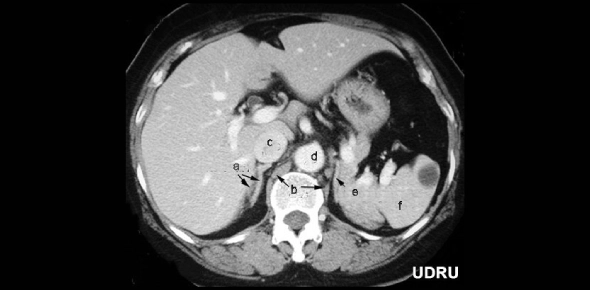
.webp)
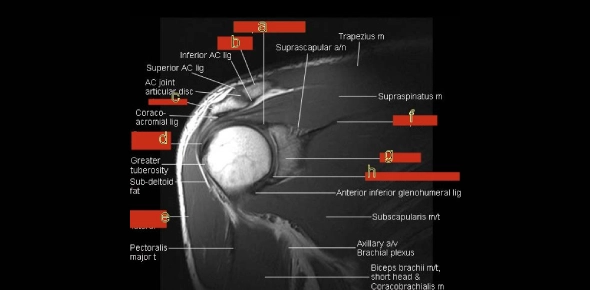
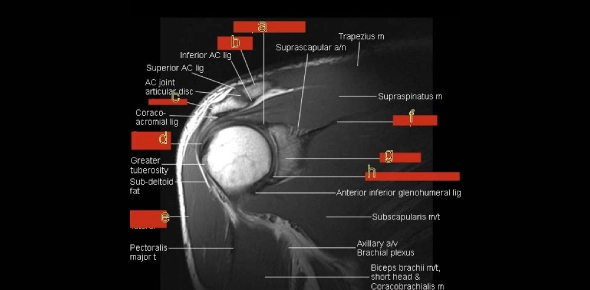
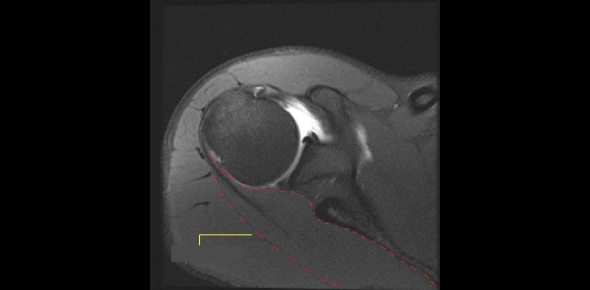
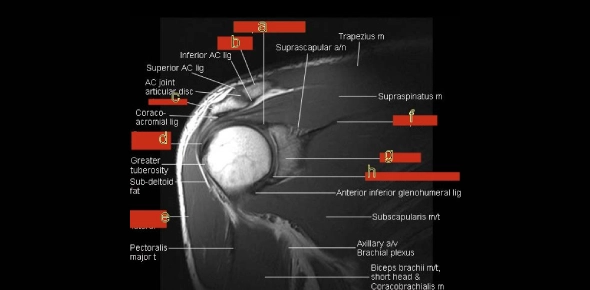
.webp)
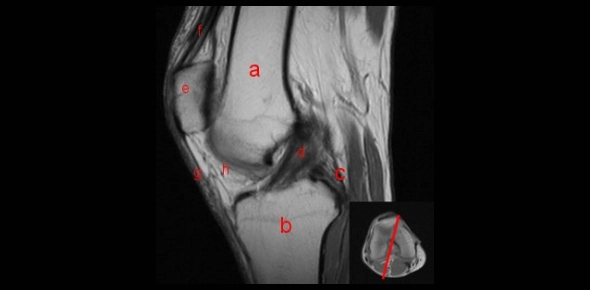




.webp)



